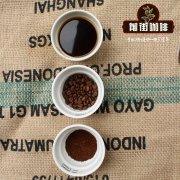Is Mexican coffee famous? what is the flavor and taste of Mexican coffee beans?

Professional coffee knowledge exchange more coffee bean information please follow the coffee workshop (Wechat official account cafe_style)
Some people think that the best giant coffee beans are produced in Mexico rather than Guatemala, but the supply and quality of coffee beans in both places can change. The coffee beans, known as Maragogype, have large particles, and the coffee produced is smooth, mellow and fragrant. The poverty of farmers has caused most coffee to grow under natural conditions, that is, without the use of chemicals such as insecticides or fertilizers.
Mexico has a long history of producing coffee and is currently one of the most important coffee producing countries in the world. The coffee produced in Mexico is naturally called "Mexican coffee". About 5 ℃ of Mexico's national area are plateaus and mountains, and the annual average temperature is 25 Muth27. The Mexican plateau has a mild climate all the year round, with mostly plateau topography, no severe cold in winter, no heat in summer, and evergreen trees in four seasons, so it enjoys the laudatory name of "Pearl of the Plateau".
Due to geographical and climatic reasons, the coffee growing area in Mexico is close to Guatemala, and the main producing areas are Cora Begu and Aluca states. Most of the products are washed beans produced in the highlands, with a good aromatic and sour taste.
Areas where coffee is grown in Mexico:
Chiapas, Colima, Guerrero, Hidalgo, Jalisco, Michoagan, Nayaritt, Oaxaca, Puebla, San Luis Potosi, Veracruz
Chiapas, Colima, Guerrero, Hidalgo, Harrisco, Michoacan, Nayaritt, Oaxaca, Puebla, San Luis Potosi, Veracruz
Common varieties:
Bourbon,Typica,Caturra,Mundo Novo,Maragogype,Catimor,Catuai and Garnica
Bourbon, Tibica, Kaddura, New World, Marago Zipi, Katim, Kaduai and Ghanica
Handling method:
Washed washing method
Mechanically demucilaged mechanical pulp removal (also known as semi-washing semi-washed)
Taste characteristics: large particles, with a strong sweet, sour taste and good aroma.
It is characterized by a smooth taste, high acidity, medium mellowness and a slightly nutty finish. Sweet, sour and bitter are neutral, moderately sour, special and elegant.
Important Notice :
前街咖啡 FrontStreet Coffee has moved to new addredd:
FrontStreet Coffee Address: 315,Donghua East Road,GuangZhou
Tel:020 38364473
- Prev

The characteristics of single mocha coffee beans suggestions on how to make Yemeni coffee
Professional coffee knowledge exchange more information about coffee beans Please follow the coffee workshop (Wechat official account cafe_style) Mocha gets its name from the famous port of Mocha. Transportation in East Africa was very underdeveloped in the 15th century, but it produced the world's most precious coffee beans, which were gathered in the Yemeni port of Mocha and shipped to Europe. Today, the port of Mocha has been caused by silt.
- Next

How do Bolivian coffee beans taste? description of coffee flavor in Bolivian Rose Summer
For more information on coffee beans, please follow the Coffee Workshop (Wechat official account cafe_style) Bolivia is one of the five most diverse countries in the world, a landlocked country surrounded by and deeply affected by five countries, with a population of more than 1000. The Indian aborigines, who account for about 60% of the total population, are divided into 36 ethnic groups, mixed Indo-European (Mestizo) account for 26%, and in addition,
Related
- Beginners will see the "Coffee pull flower" guide!
- What is the difference between ice blog purified milk and ordinary milk coffee?
- Why is the Philippines the largest producer of crops in Liberia?
- For coffee extraction, should the fine powder be retained?
- How does extracted espresso fill pressed powder? How much strength does it take to press the powder?
- How to make jasmine cold extract coffee? Is the jasmine + latte good?
- Will this little toy really make the coffee taste better? How does Lily Drip affect coffee extraction?
- Will the action of slapping the filter cup also affect coffee extraction?
- What's the difference between powder-to-water ratio and powder-to-liquid ratio?
- What is the Ethiopian local species? What does it have to do with Heirloom native species?

